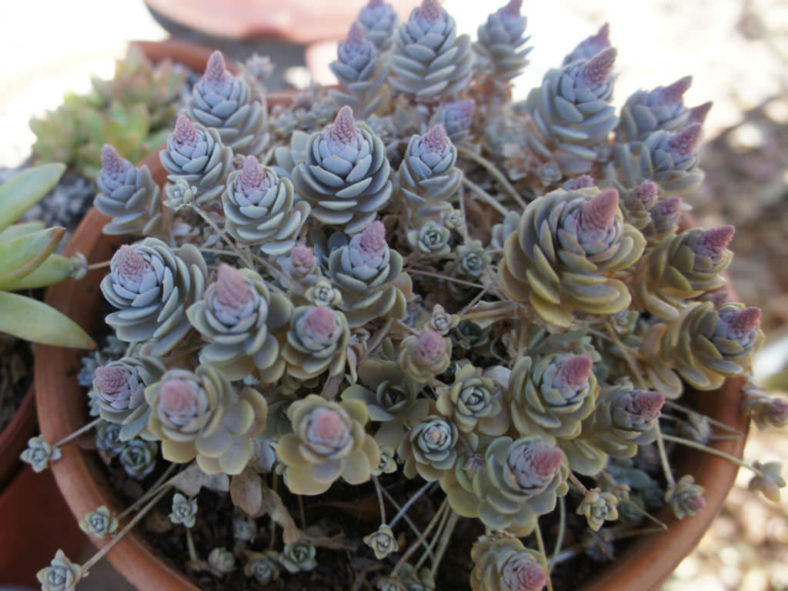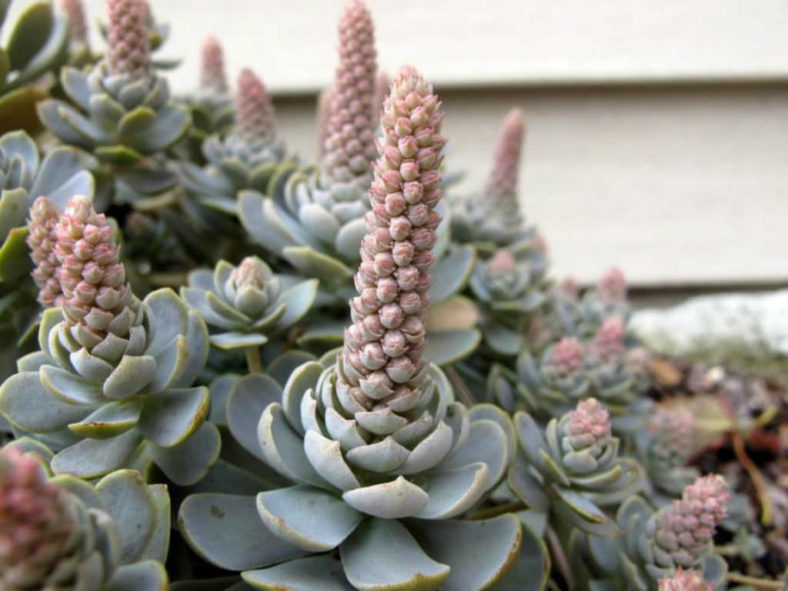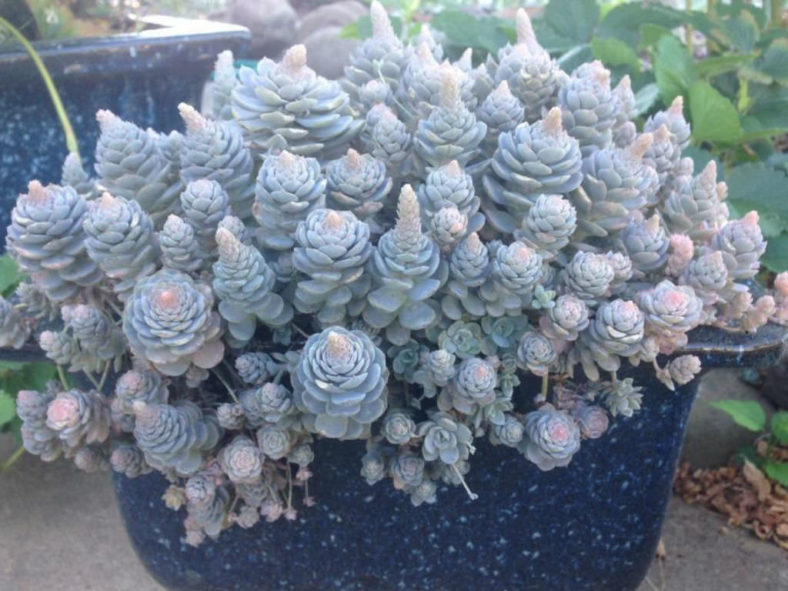Scientific Name
Orostachys malacophylla var. iwarenge (Makino) H.Ohba
Common Name(s)
Chinese Dunce Cap, Dunce's Cap
Synonym(s)
Cotyledon iwarenge, Hylotelephium iwarenge, Orostachys iwarenge, Sedum iwarenge
Scientific Classification
Family: Crassulaceae
Subfamily: Sedoideae
Tribe: Sedeae
Subtribe: Umbilicinae
Genus: Orostachys
Etymology
The varietal epithet "iwarenge" (pronounced "ee-wah-REN-geh") means "rock lotus" and refers to the lotus-like rosettes of this variety, which grow on rocky terrain.
Origin
Contrary to its common name, "Chinese Dunce Cap," this succulent is native to Japan, not China. The name refers to the tall, conical shape of its fall bloom stalks.
Description
Orostachys malacophylla var. iwarenge, formerly known as Orostachys iwarenge, is an attractive ground cover that forms cone-shaped rosettes of fleshy, lavender-grey leaves. The rosettes can grow up to 2 inches (5 cm) in diameter and spread by short stolons, forming a clump that can reach 1 inch (2.5 cm) tall and 18 inches (45 cm) in diameter.
In late summer to early fall, the rosettes are topped with towers, up to 6 inches (15 cm) tall, jammed with tiny, yellow to creamy-white flowers. Each flowering rosette dies away but is unnoticed among the mass of smaller rosettes.

How to Grow and Care for Orostachys malacophylla var. iwarenge
Hardiness: USDA hardiness zones 4a to 8b: from -30°F (-34.4°C) to 20°F (-6.7°C).
As with most similar genera of the Crassulaceae family, this plant can survive in fairly poor soil so long as it is well-draining. This genus is very cold-hardy and can survive temperatures as low as -30°F (-34°C). Allow soil to dry to the touch between waterings and avoid getting water on the rosettes. Orostachys is active in spring and summer. It requires some bright light and does not tolerate high humidity well.
Orostachys self-propagates through offshoots; at a given time, one plant will form a dense mat of many. Propagation is primarily through offset separation.
To separate an offset, remove soil from the offset's base to find the stolon (a thick root that attaches the pup to the mother plant). It is best to use an offset that has already established its roots. Cut the stolon close to the pup (to discourage roots from growing from the stolon). Place the offset into a small pot with well-draining, sandy soil. Do not water until new growth is noted.
Learn more at How to Grow and Care for Orostachys.
Links
- Back to genus Orostachys
- Succupedia: Browse succulents by Scientific Name, Common Name, Genus, Family, USDA Hardiness Zone, Origin, or cacti by Genus
Photo Gallery
Click on a photo to see a larger version.


